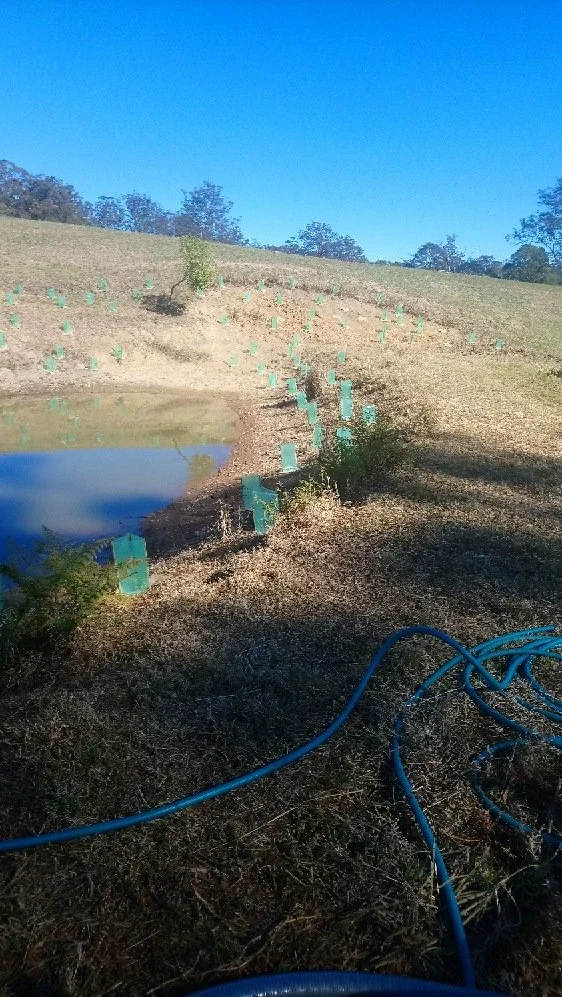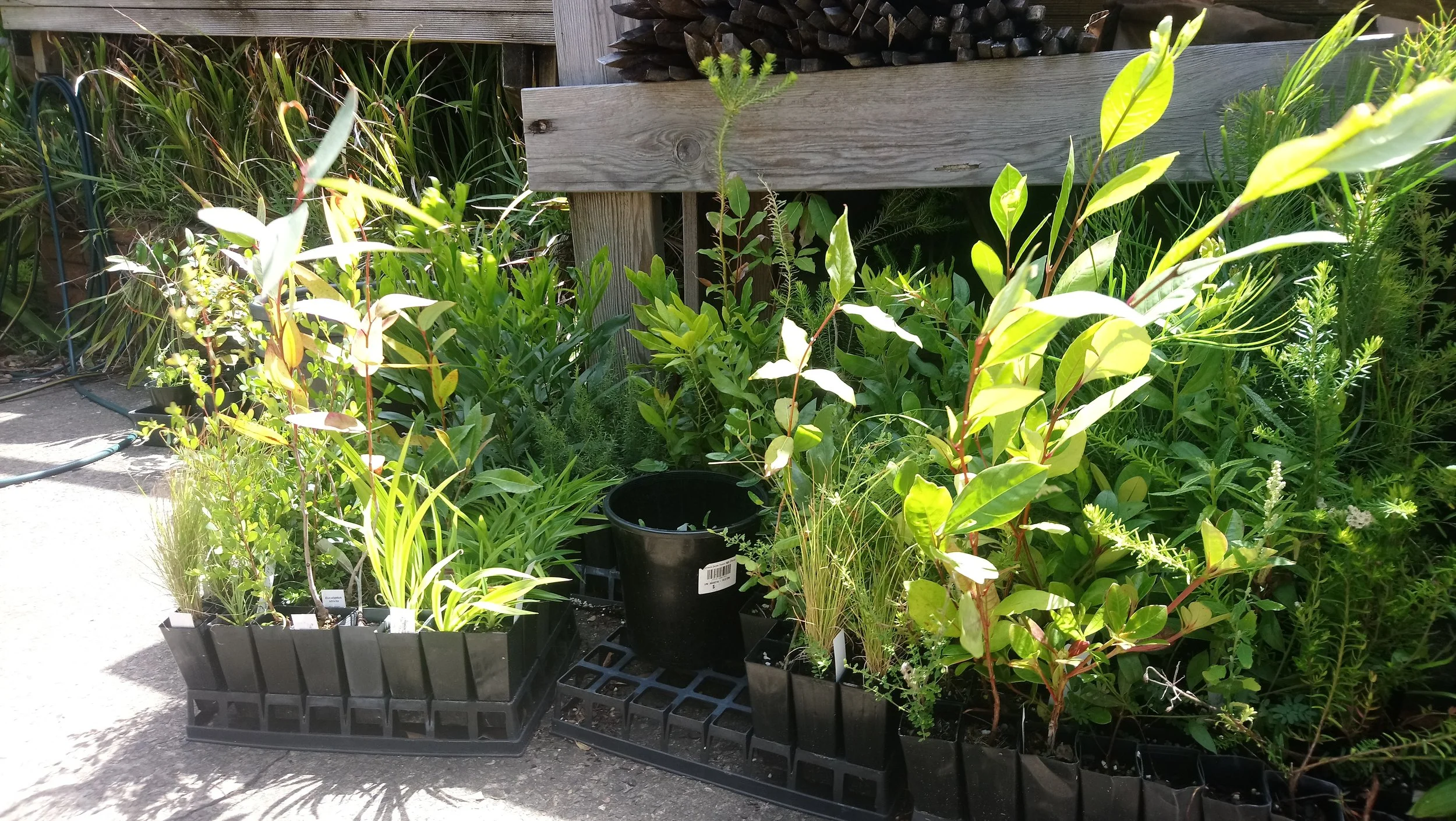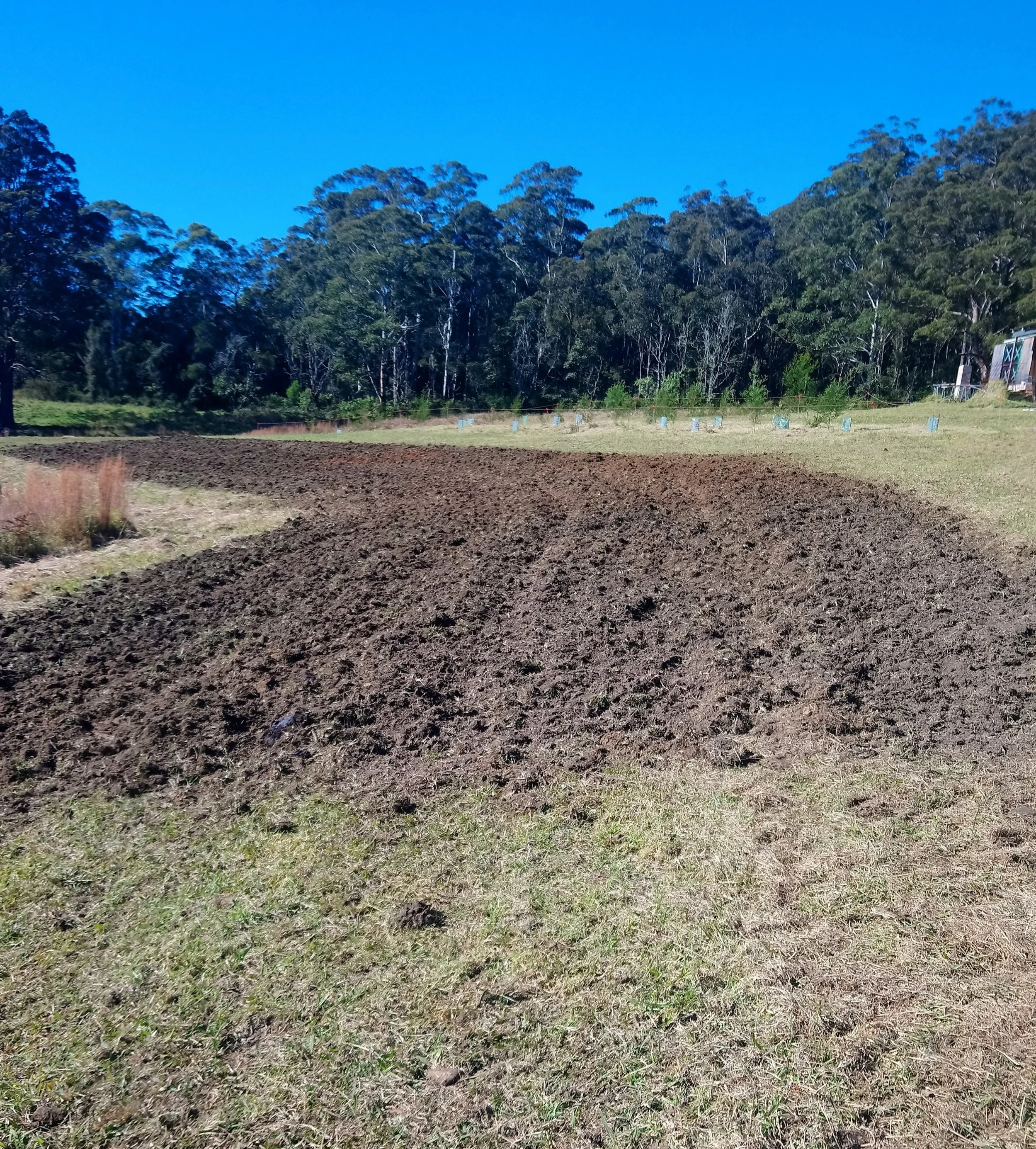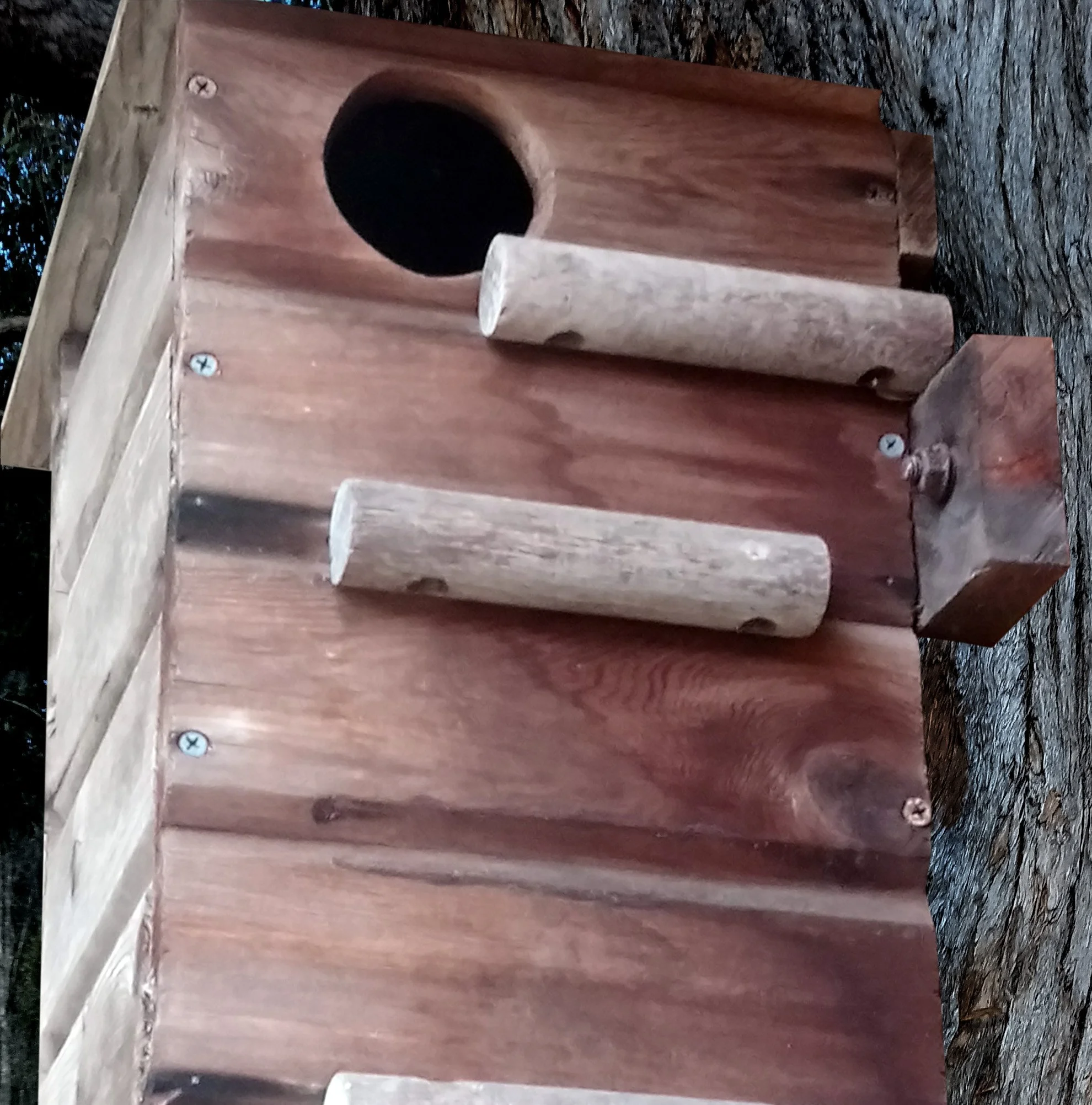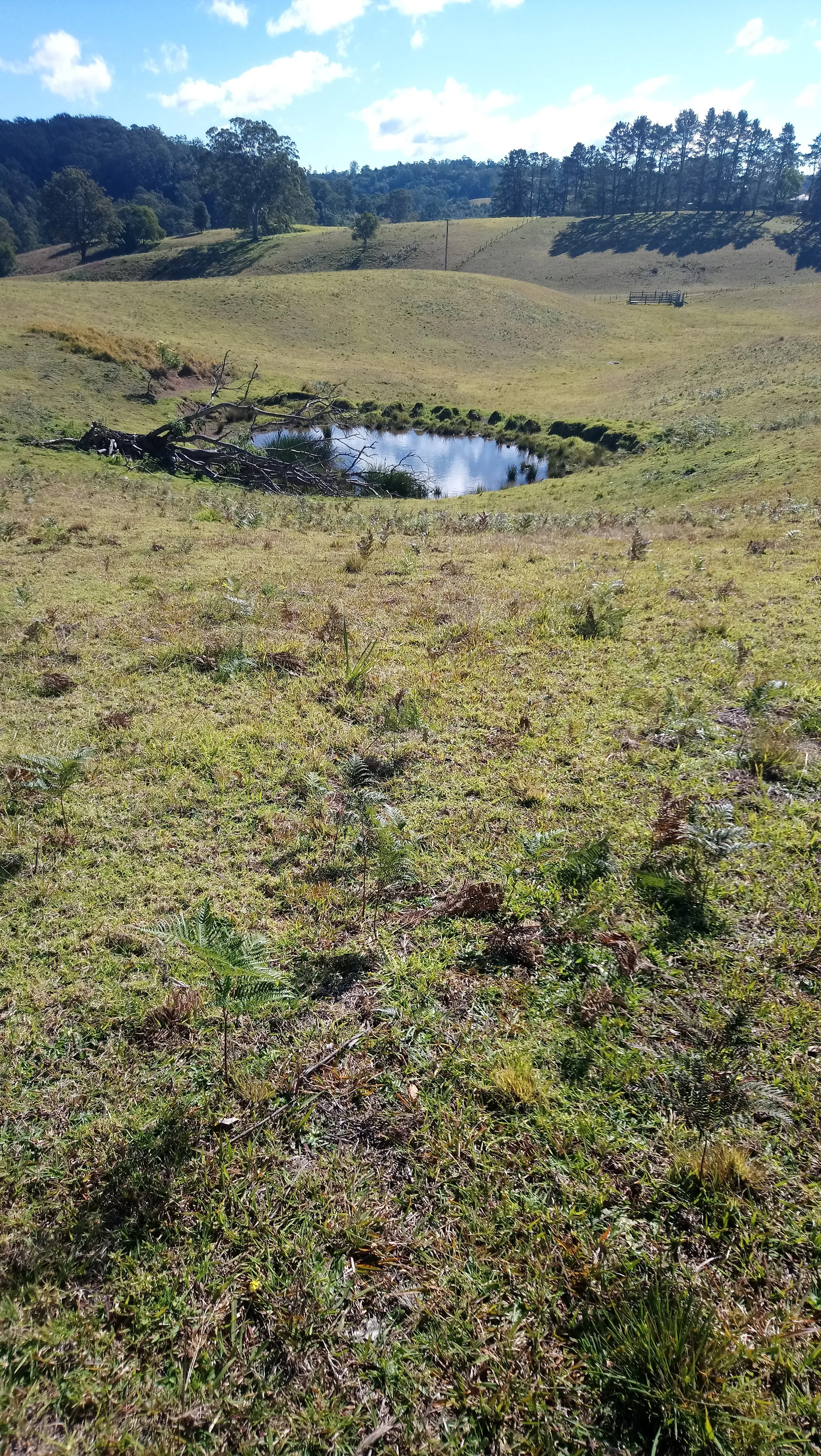
Projects & Works
Your support helps continue the ongoing work within the private land conservation initiative & nature refuge, for now and the future. Below are some realistic costs associated with the work.
Wildlife pond (planting and erosion control)
Stream restoration 900m x 100m (by hand!)
Planting mixed grasses and herbage for wallaby grazing
Remove central barbed wire fence (500m) and fill in old post holes
Gully planting and maintenance
Python boxes (homes)
Re-vegetation lots with 45 tube-stock plants (purchase, planting, aftercare)
Shelter belts & wildlife corridors (preparation, planting, aftercare)
Nest boxes (purchase, installation, upkeep)
The Forest Oak stand (expand an existing site for yellow-tailed and glossy black cockatoos)

Wildlife pond planting and erosion control
What is assisted regeneration?
This was a leaky dam in a natural watercourse, with areas of erosion. We have taken the initiative to plant 480 local trees, shrubs, understory plants, grasses and ground covers. Firstly we prepared the area by removing thick, invasive kikuyu grass manually (without use of chemical herbicides). The plants will gradually establish themselves and slowly the kikuyu will weaken, unable to grow under the darker canopy.
Using plants that create inhospitable environments for kikuyu is a passive non-toxic way of restoring areas that are dominated by this African grass. The plantings include Casuarinas, Melaleuca and Leptospermum, ideal species in this ephemeral wetland development project.
The area requires ongoing maintenance to keep kikuyu from smothering young trees. For one year:
- two people
- three days
conducted twice yearly (spring and autumn)
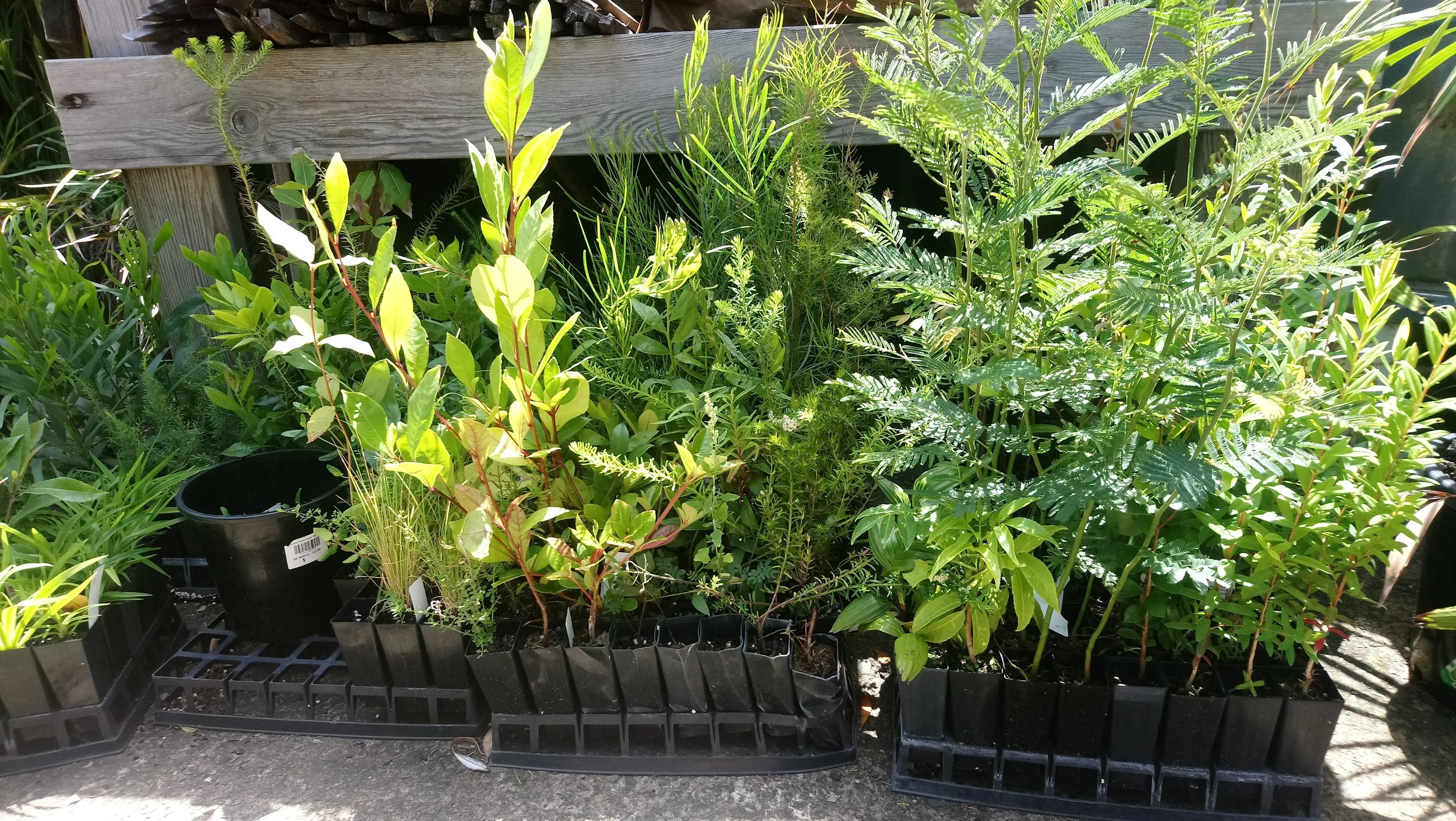
Re-vegetating with tubestock plants
Here is a shot of several trays of tubestock. One tray holds 45 plants.
Cost to buy a tray of 45 plants
plus 45 coconut coir weed mats
and 135 recycled wooden stakes
$675
Cost to maintain 45 plants for one year
(carting water, replenishing natural minerals and weeding)
$600
Total cost $1275
Shelter belts, corridors & windbreaks
Area preparation: the key to successfully establishing plantings.
The kikuyu infested paddock areas were left by previous management in a compacted overgrazed state. Kikuyu is extremely adverse to young plants due to its vigorous invasive growth. Yet as the only vegetation in some areas it also plays a role against soil erosion. Accordingly we work by only exposing individual small (40m x15m) sections to remove the kikuyu progressively, without use of herbicides. This work requires a large 80 horsepower tractor and chisel plough (all work is carried out on the contour of the land).
Subsequently boughs and branches are laid down to slow surface water flows, to percolate and catch nutrients. In time, native grasses and other local plants will establish. Fast growing black wattles (Acacia dealbata, Acacia mearnsii) and bottlebrush (Callistemon pallidus) are selected and planted closely to bind the soil and bring nutrients in. Clumps of native grasses are planted which go to seed and spread.
You have to have something for the fauna (and flora) to find and flourish on.
The quick-growing pioneer plants attract animals (birds, reptiles, marsupials and insects) into the area. Within a short time (under a year) the seed-laden animal droppings bring plant species in from the surrounding forest… and regeneration begins.
Other areas within the paddocks are already regenerating themselves due to naturally occurring seed banks close by. This illustrates how natural rehabilitation methods yield results that spill over into other nearby areas.
Preparation is at the primary stage and considerable kikuyu removal work remains to be done. Aftercare will also be required over a few years until finally the native plantings can over-shade and out-compete the kikuyu.
Total timeframe of repeat ploughings on this size area to form wildlife corridor section: 6 months (working with the weather)
Total cost to prepare 40m x 15m
$540 per pass (requires several passes, with fuel and tractor operator)
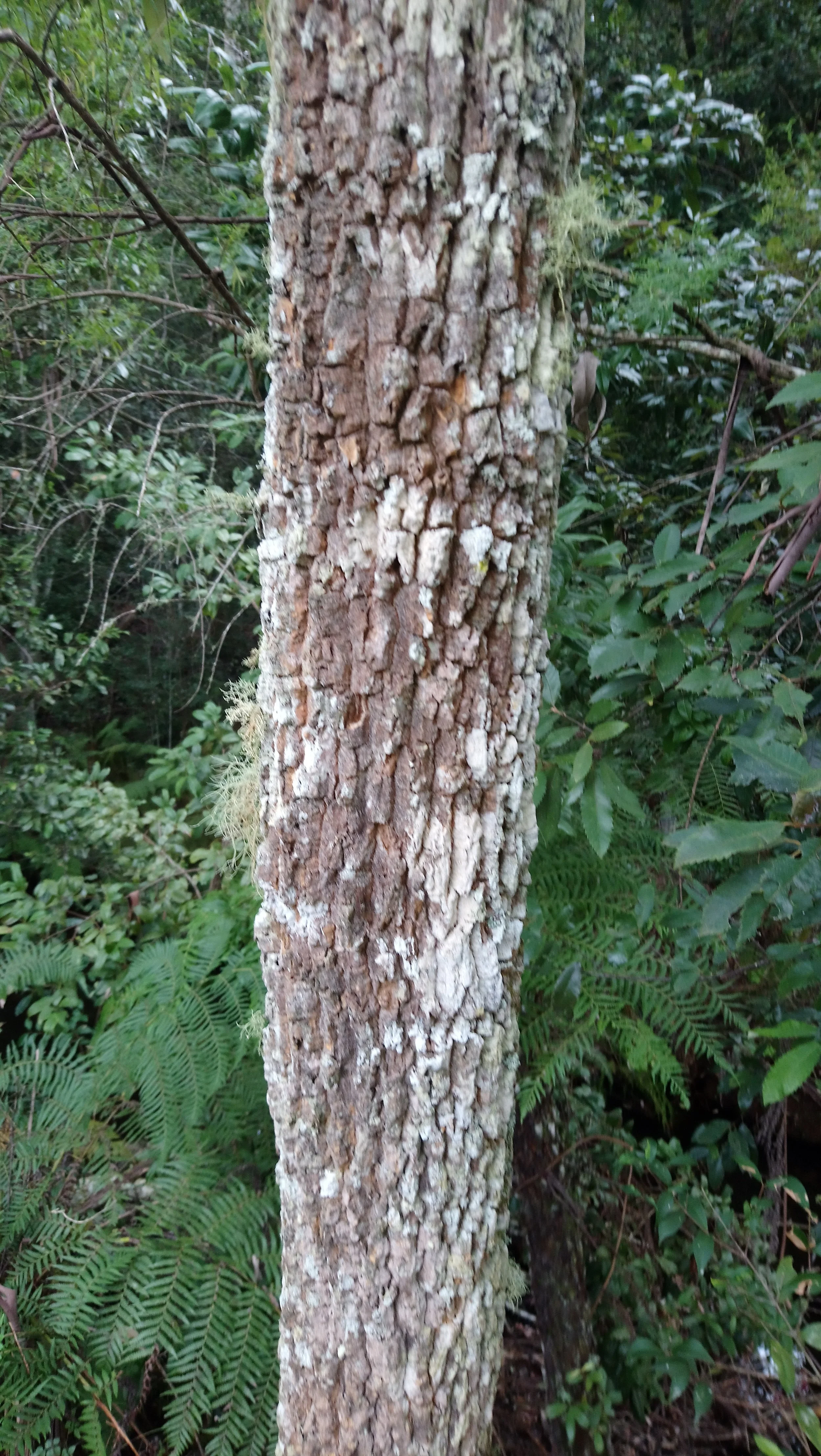
Allocasuarina torulosa & Allocasuarina littoralis
The aim is to assist in the expansion of Forest Oaks and Black She-oaks. We use these casuarinas and wattles to provide more habitat and special seed for the critically endangered glossy black cockatoo and well-loved yellow-tailed black cockatoo. These birds also require the protein-rich larvae that live in wattle species, so a range of them will be included in these plantings.
Natural regeneration with typical forest species of the region is occurring in some areas on the land. However only one large ‘Oak’ was left in the old paddock area, and the natural regeneration here is non-existent. Casuarinas have male and female flowers and pollen on separate trees, so a number of seedlings are required to achieve sufficient seed for self-propagation and food for the cockatoos.
These trees take several years to establish themselves, pollinate and develop their seed.
Logging for the baking industry (casuarina was a favoured ‘cheap’ fuel for bread ovens), clearing for cattle and burning off have left the area denuded of its ‘Oaks’. The Forest-oak and She-oak have been dismissed by many as ‘scrub’… But not by the glossy blacks and yellow-tails, and not by us!
We aim to spot-plant a mix of the ‘Oak’ through the area so that more male and female trees grow up to produce viable seed. This will require fencing-off for a period of time. Planting for the future.
Requires seedlings, portable fencing, water cartage, mats and stakes, and aftercare.
Cost to buy a tray of 45 plants
plus 45 coconut coir weed mats
and 135 recycled wooden stakes
$675
Cost to maintain 45 plants for one year
(carting water and weeding)
$600
Total cost $1275
Portable Fencing (50m), solar operated, with installation $900

Nest boxes
Handmade in reused natural timber
These nest boxes vary in size and shape as different species seek different characteristics. A space that approximates the dimensions and qualities of a natural hollow is key to attracting in life to make a nest or drey.
Insulation & drainage are both very important to protect the nesting site from rain and inclement weather, and keep its interior fluctuations tolerable. That is, closely replicating the conditions of a real tree hollow.
Installation is on individual large recycled posts (not nailed to trees), properly sited in terms of aspect, height, cover and protection, with footings internally and externally for wildlife access. Also requires annual maintenance.
$800

“Biodiversity conservation is critical… and needs to be balanced with people’s demands for food. Stopping for Butterflies does both with food production sites that enhance soil health and productivity, as well as 27 hectares of intact forest supporting biodiversity and landscape connectivity.”
— Christopher Scott
BLandMgt, PostgradCertRivResto&Mgt, MEnvMgt.


